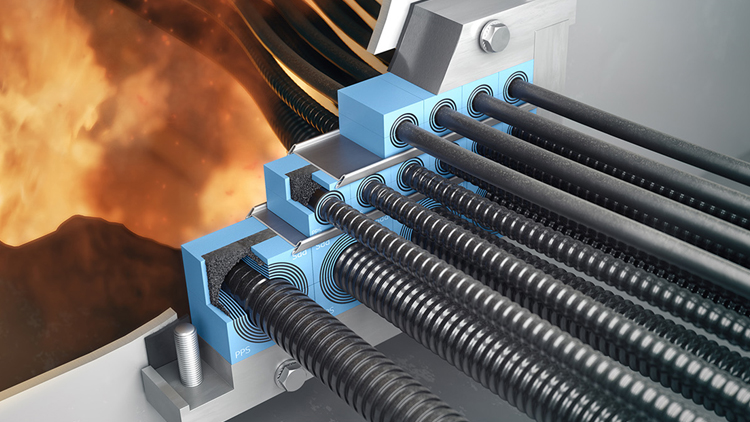Revolutionizing Plastic Pipe Sealing in Passive Fire Protection
In modern construction, the integration of various building materials necessitates innovative solutions for fire safety. One critical aspect is the sealing of plastic pipes, which are prevalent in plumbing and HVAC systems. Plastic pipes, while advantageous for their durability and ease of installation, pose significant fire risks if not properly sealed. This article explores how advancements in sealing technologies are revolutionizing plastic pipe sealing in passive fire protection, ensuring enhanced safety and compliance with fire safety standards.
The Challenge of Plastic Pipes in Fire Safety
Plastic pipes, typically made from materials such as PVC (polyvinyl chloride), CPVC (chlorinated polyvinyl chloride), and PEX (cross-linked polyethylene), offer numerous benefits over traditional metal pipes, including corrosion resistance, lightweight properties, and cost-effectiveness. However, these pipes can become conduits for fire and smoke spread if they melt or burn during a fire incident. The challenge is to effectively seal these pipes where they penetrate walls, floors, and ceilings, ensuring that fire compartments remain intact.
Innovative Sealing Solutions
Recent innovations in passive fire protection have led to the development of advanced sealing solutions specifically designed for plastic pipes. These solutions include intumescent materials, firestop collars, and firestop sealants, each playing a vital role in preventing fire and smoke from spreading through pipe penetrations.
1. Intumescent Materials: Intumescent materials are reactive substances that expand significantly when exposed to heat. This expansion helps to seal gaps and openings, effectively blocking the passage of fire and smoke. When used around plastic pipes, intumescent wraps or sleeves can expand to fill the space left by the melting pipe, maintaining the integrity of the fire barrier.
2. Firestop Collars: Firestop collars are designed to encircle plastic pipes at their penetration points. These collars contain intumescent materials that expand when exposed to fire, crushing and sealing the pipe as it melts. Firestop collars are easy to install and provide a reliable solution for a variety of pipe sizes and configurations.
3. Firestop Sealants: Firestop sealants are applied directly to the gaps around plastic pipe penetrations. These sealants can be intumescent or non-intumescent, forming a heat-resistant barrier that prevents fire and smoke from passing through. Firestop sealants are versatile and can be used in conjunction with other firestop systems for enhanced protection.
Performance and Testing
The effectiveness of plastic pipe sealing solutions in passive fire protection is determined through rigorous testing and certification processes. Organizations such as ASTM International, Underwriters Laboratories (UL), and the International Code Council (ICC) provide standardized tests to evaluate the fire resistance of sealing systems. Key performance criteria include:
1. Fire Resistance Rating: Sealing solutions must achieve a specified fire resistance rating, indicating the duration they can withstand fire exposure while maintaining their integrity. This rating is essential for ensuring that the sealing system can perform effectively during a fire.
2. Temperature and Pressure Resistance: Sealing systems must be able to withstand the high temperatures and pressures associated with fire conditions. This includes resisting thermal expansion, maintaining adhesion, and preventing the passage of hot gases.
3. Durability and Longevity: Long-term performance is crucial for passive fire protection systems. Sealing solutions must be durable and resistant to environmental factors such as moisture, chemicals, and UV radiation to ensure they remain effective over the building's lifespan.
Advantages of Advanced Sealing Technologies
The adoption of advanced sealing technologies for plastic pipes offers numerous advantages, enhancing the overall fire safety of buildings.
1. Enhanced Safety: By effectively sealing plastic pipe penetrations, these innovative solutions prevent the spread of fire and smoke, protecting occupants and reducing property damage.
2. Compliance with Regulations: Advanced sealing solutions help builders and contractors comply with stringent fire safety codes and standards, ensuring legal and insurance requirements are met.
3. Versatility and Ease of Installation: Modern sealing systems are designed for ease of installation, with solutions available for various pipe sizes and configurations. This versatility allows for seamless integration into new constructions and retrofitting projects.
4. Cost-Effectiveness: While the initial investment in advanced sealing technologies may be higher, the long-term benefits, including enhanced safety and compliance, result in overall cost savings.
Application in Indian Context
In India, where rapid urbanization and industrial growth demand robust fire safety measures, the revolutionizing of plastic pipe sealing in passive fire protection is particularly relevant. The country's diverse building environments, ranging from high-rise residential complexes to large industrial facilities, require effective and reliable firestop solutions.
Recent fires in urban centers have highlighted the critical need for improved fire safety infrastructure. Implementing advanced plastic pipe sealing technologies can significantly enhance the fire resilience of buildings, protecting lives and property. Moreover, the increasing emphasis on adhering to international fire safety standards in India underscores the importance of adopting state-of-the-art sealing solutions.
Conclusion
The revolutionizing of plastic pipe sealing in passive fire protection marks a significant advancement in building safety. Through the development and implementation of innovative sealing technologies, the fire risks associated with plastic pipes can be effectively mitigated. These solutions not only enhance safety and compliance but also contribute to the overall resilience and sustainability of modern buildings. As India continues to grow and develop, embracing these advancements in fire protection will be essential in ensuring a safer and more secure built environment.












Leave A Comment